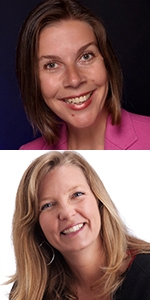
Sustainable change in education begins with sharing your needs and vision for what is possible. Although this might seem obvious at first, there are ways we’ve seen leaders supercharge their approach to the task, integrating history with a collective vision for change to lay the foundation for strong change that sticks. In this post in our sustainable change series, we’ll dive deeper into the ways they’ve made it happen.
Position history as a foundation for the future.
A strong vision is not just a picture of what could be. The best visions are rooted in the history of your context and the people who have gotten you this far. Change efforts can often falter because they fail to honor the hard work that has brought you to your current point. When a leader develops a new vision, the team that was integral to the existing work might feel as though their work was irrelevant or has fallen short in some way. At Thrive, we use Deal and Peterson’s book, Shaping School Culture, to focus on building on organizational history: “The past is always with us, whether we want to admit it or not. … Knowing one’s history replaces amnesia with mindfulness, rootlessness with purpose and direction.”
Here’s a real-life example – we once worked with an organization that had a rich history spanning 50 years. In order to set a new course for their work inspired by a recent growth spurt, we suggested they begin by celebrating their history and creating a shared vision for forward movement. Some members of the organization had been there for over 30 years, while others were in their first year of work. In order to create a shared story that applied to everyone, no matter their tenure with the organization, team members needed to develop a common understanding of the work. To that end, people assembled around tables that represented the timeframe in which they joined the organization, and each table featured artifacts from the time they joined (pictures, social media clips, school newsletters, and so forth). Each group prepared a presentation for the larger gathering, and these meaningful representations of their history were added to a timeline that covered the entire room, creating a celebration of the organization with tangible examples that added color and context to specific eras. The exercise allowed team members to feel connected to the history of the organization – and gave the leadership team a strong foundation from which to develop future strategies and a vision rooted in key lessons and events of the past.
Strategies and Tools: Listening Tours, Empathy Interviews and Timeline Creation
Pro Tip: Link your vision for the future to the events of the past, ensuring that the process of looking back is not a single event or a “flash in the pan.” (Back to the Future Protocol)
Tapping External Support: Using a consultant to facilitate this work allows for everyone to fully participate and be present. This can help ease the hierarchical tension as leaders get to be learners alongside their teams. Consultants can also ease time constraints by helping collect artifacts and highlights.

Make it a collective vision.
The strongest visions are ones that echo many voices. As a rising school leader, one of my mentors was a former pastor and superintendent whose favorite saying was, “If you have a bad soloist, get a bigger choir.” This idea of many voices singing one song to create something beautiful has stuck with me over the years. But leadership, like conducting a choir, begins with listening and building a collective story. Slowing down to listen and making the space for co-creation were some of the hardest things I had to learn to do as a leader. I struggled to think of how I could find time in my already-packed schedule for this, but then I realized that it didn’t need to be a monumental task. In fact, if done right, it could save time and make room for more meaningful progress.
We think of this work in three layers: reach, depth, and leadership.
To address the first layer (reach), create a survey addressed to all stakeholders to help you uncover the voices that you may not usually hear. Surveys are easy to engage in, simple to send out multiple times, and help to start a conversation that can – and often will – go much deeper. But beware: a survey alone will not create a cohesive ‘choir!’ You must also create time and space to explore more deeply the trends that the survey unveiled.
For the next layer (depth), go deeper by scheduling empathy interviews to peel back the layers you’ve uncovered and ensure that solutions are founded upon impactful roots. We often make assumptions about why things are happening, but when we truly listen in empathy interviews, we may find new perspectives. We have developed this empathy interview tool to help focus your interview, which should be tailored to your specific team and context.
For the final layer (leadership), engage in a process like Leader Rounding to receive continuous input from staff while also checking in to ensure that change is cascading through the system. These quick check-ins take a systematic approach to “keeping a pulse” on change while simultaneously building meaningful relationships. How is change impacting your team? Do they have what they need to move the vision forward? Creating sustainable change means valuing the individuals – the voices in your choir – who help to create something beautiful.
Strategies and Tools: Surveys, Empathy Interviews, and Rounding
Pro Tip: Make sure you share back what you heard and find areas to take action that help demonstrate your responsiveness as an organization.
Tapping External Support: This is a great time to use a leadership coach, especially if empathy interviews or leader rounding activities might feel uncomfortable. Great athletes have coaches, and great leaders can benefit from them too. A consultant may also help you collect and analyze information from an outside perspective, creating the opportunity for more “a-ha” moments.
In short, by tapping into your organization’s history to help weave a new collective vision for the future, you will be taking a powerful step to make sure both veteran and new team members feel connected to your context, purpose, and each other.
In our next blog in this series, we’ll dive into the ways that you can leverage small wins along your journey toward large-scale change.
This blog is part of a series. Read the introduction to the series here.
Thrive is a nonprofit consulting firm composed of education leaders and coaches who are dedicated to sustainable change and transformative learning.

